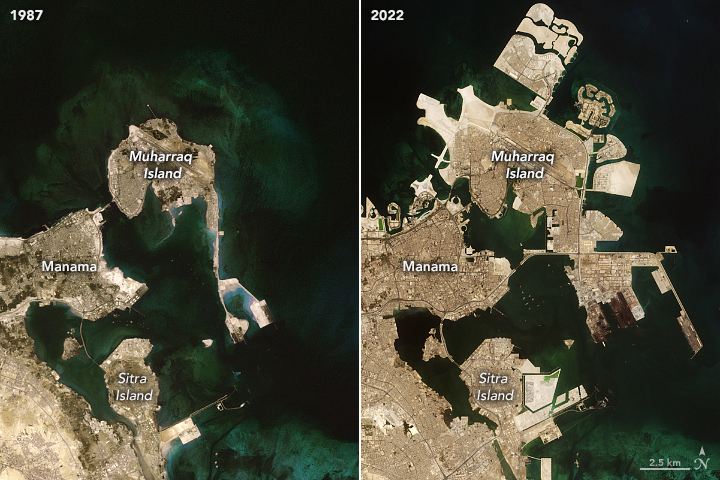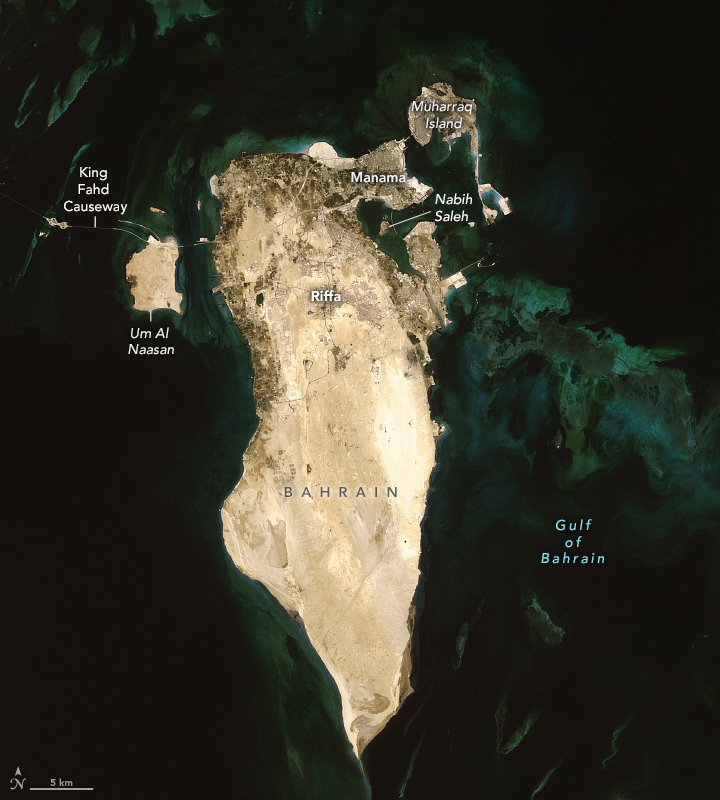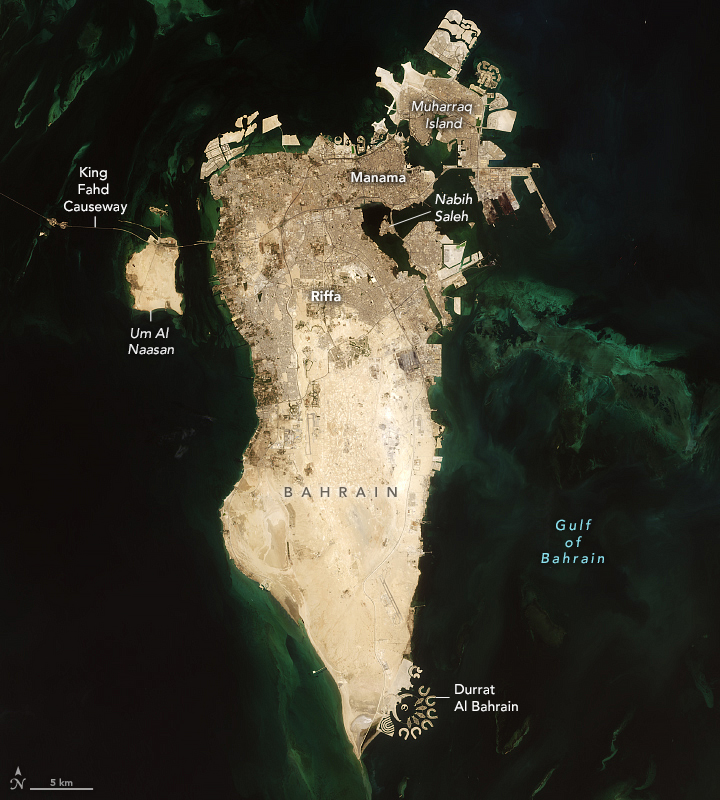Bahrain is a small country with a big population.
Both have been growing larger in recent decades.
Since the early 1980s, the population of this island nation in the
Persian Gulf has quadrupled. In 2022, it reached 1.5 million.
As
population density has increased and urban development has spread, the
need for land has grown.
“Like other countries in the [Persian] Gulf, rapid population growth
and the simultaneous increase in urbanization, along with land scarcity,
has pushed Bahrain to invest in mega land reclamation projects to
extend its coastline,” said Eman Ghoneim, a physical geographer at the
University of North Carolina Wilmington.
Visualization with the GeoGarage platform (UKHO raster map)
These images show changes across 35 years.
The first image was
captured by the Thematic Mapper on Landsat 5 on August 17, 1987.
The
second image, captured by the Operational Land Imager (OLI) on Landsat 8, shows the same area on August 17, 2022.
In 1987, Bahrain Island had just recently been linked to Saudi Arabia
via the King Fahd Causeway, which opened in 1986.
In July 2022, a
record 2.5 million motor vehicle passengers traveled on the 25-kilometer
(16-mile) stretch of road, according to news reports.

Change is most apparent in the country’s north, where shallow coastal
waters have made it technically and economically feasible to build new
land from the seafloor.
Notice the areal expansion of existing islands,
as well as the addition of new ones.
Sabah Aljenaid, a geographic information systems and remote sensing
scientist at Arabian Gulf University, used Landsat images to classify
changes to the land between 1986 and 2020.
Aljenaid and colleagues found
that built-up (urban) areas dominated the changes during this period,
increasing on average by 7.5 percent each year.
GB303790 ENC The Gulf - North Eastern Qatar and Ra's Tannurah(1:90,000)
BH51501B ENC Mina' Salman and Approaches (1:12,0000)
BH51504B ENC Approaches to Port of Sitrah (1:12,000)
The growth came
primarily at the expense of vegetated land and wetlands.
Aljenaid pointed out the dramatic expansion of Muharraq Island, which
now spans more than 60 square kilometers (23 square miles) northeast of
Manama, the capital city.
She also pointed to changes on the island of
Nabih Saleh, which has lost its agricultural areas.
While urban expansion has been focused in the north, parts of the
southern coastline have undergone change, too.
Dredging for the
artificial islands of Durrat Al Bahrain began in 2004; by 2007, about 5
square kilometers (2 square miles) of land had been added to Bahrain’s
southeast coast.
“A decade ago, I wrote that 11 percent of the island of Bahrain is
reclaimed land, and the growth continues today,” said John Burt, a
marine biologist at New York University Abu Dhabi.
The shape of Bahrain
in 35 more years remains to be seen.
“There was on-and-off again talk of
building a bridge across Fasht Al Adhm to Qatar,” Burt said.
“It has
not come to fruition, but it may be a future mega-development to watch
out for.”
NASA Earth Observatory images by Lauren Dauphin, using Landsat data from the U.S. Geological Survey. Story by Kathryn Hansen.






No comments:
Post a Comment